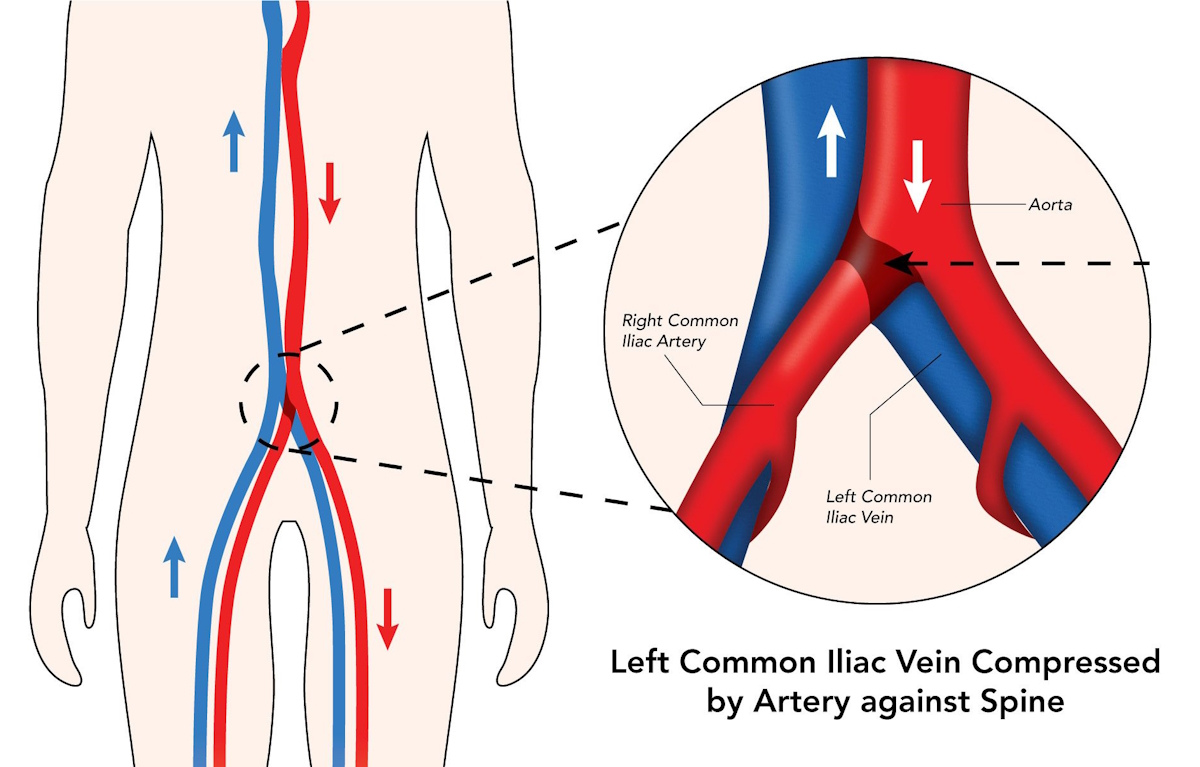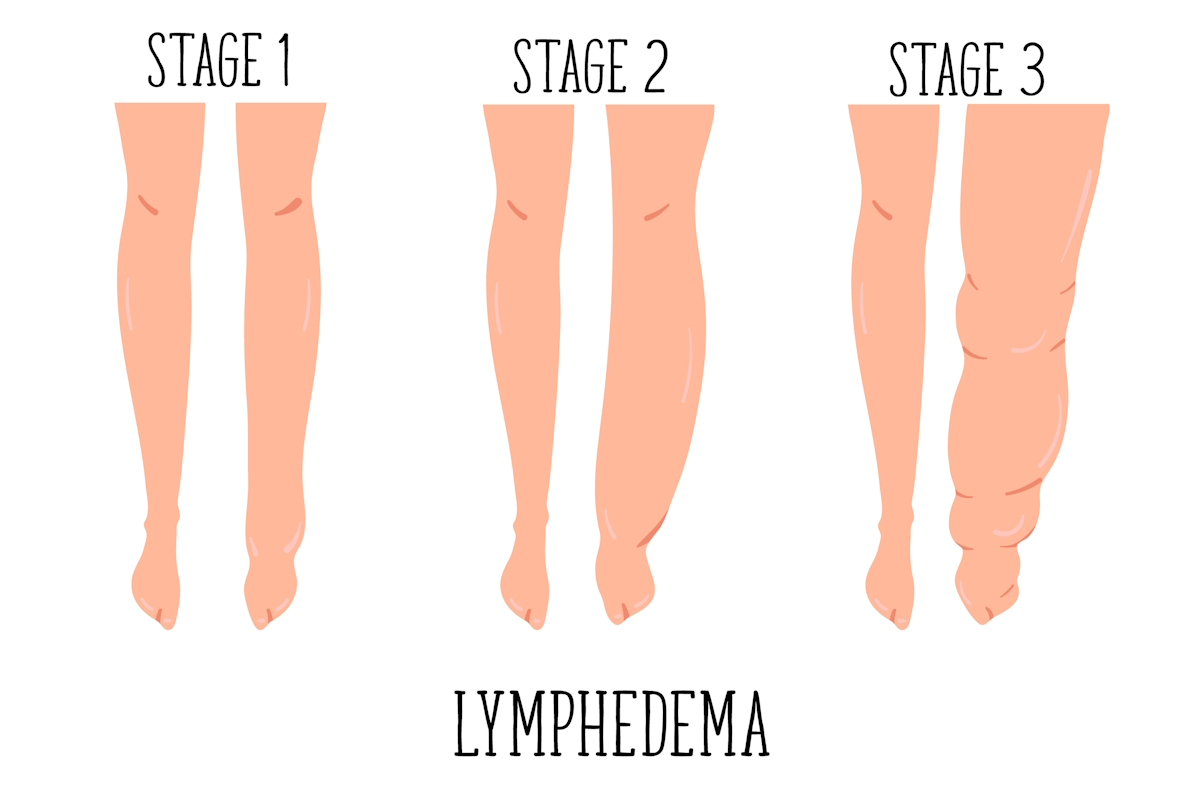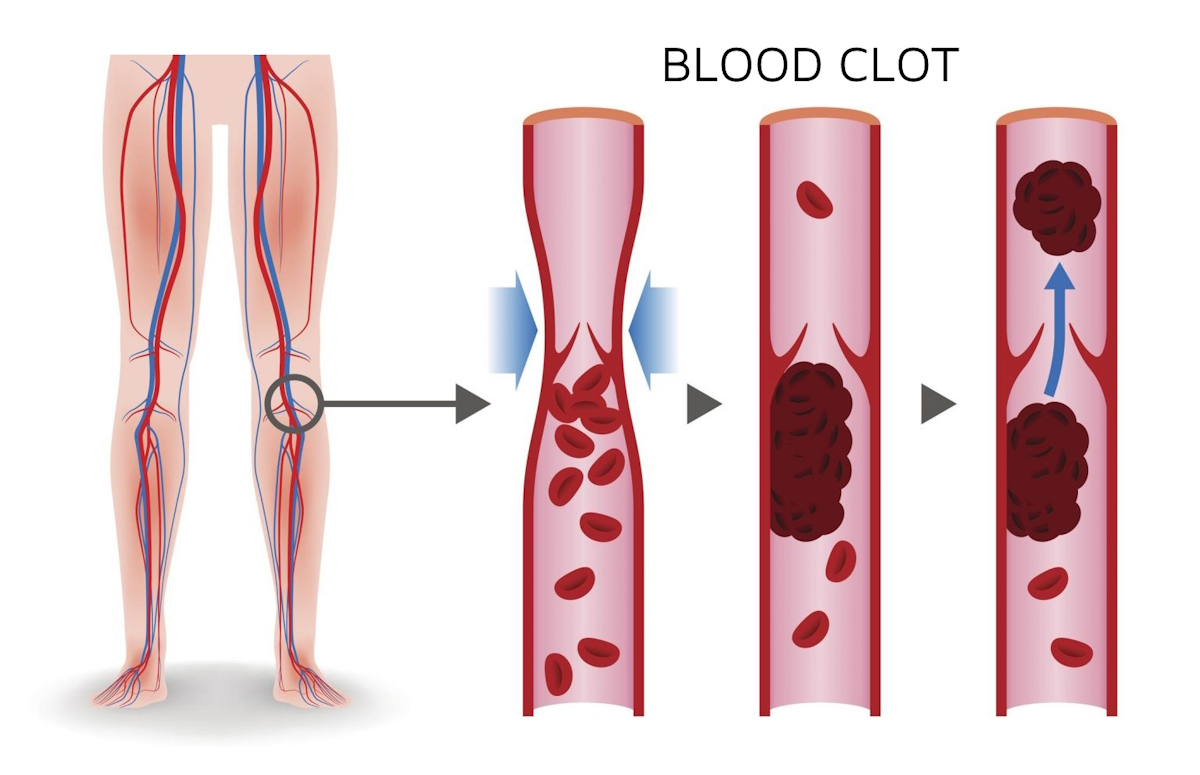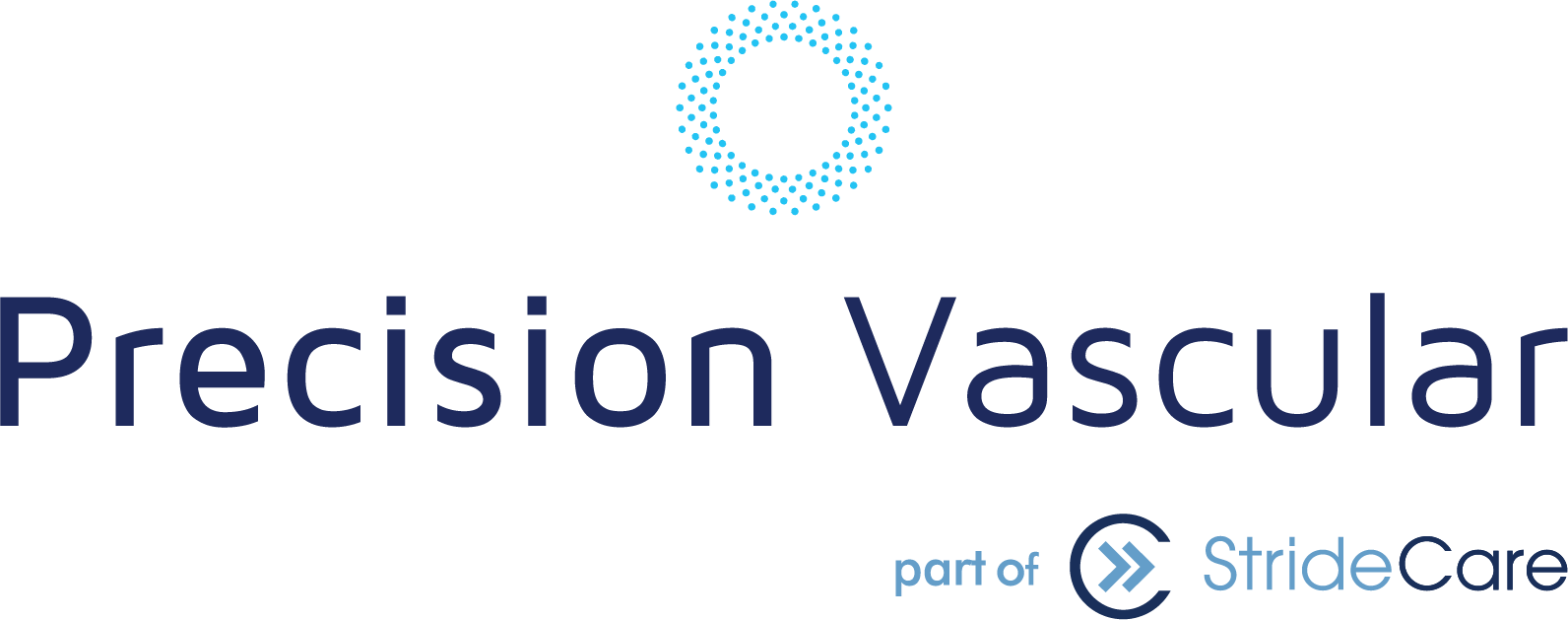Leg swelling isn’t always a cause for concern. Patients who visit their doctor for proper diagnosis may learn that what they’re experiencing is because of a recent injury or an allergic reaction to a bug bite or medication. And in time, the swelling subsides. But that doesn’t mean all cases of leg swelling are harmless. A vascular issue could be the real underlying problem. The key is determining which vascular condition is at play, especially when your leg swelling can’t be explained as easily and doesn’t present telltale symptoms.
Vascular diseases or conditions Lymphedema, May-Thurner Syndrome, and Deep Vein Thrombosis (DVT) can cause leg swelling. May-Thurner Syndrome (MTS) typically has no symptoms and can be extremely difficult to diagnose until it develops into dangerous blood clots with life-altering consequences.
Is your leg swelling vascular-related? Call 866-552-4866 to schedule a consultation with Precision Vascular’s expert physicians. Appointment
What Is May-Thurner Syndrome?
May-Thurner Syndrome, also known as Cockett Syndrome or iliac vein compression, is a rare condition where the left iliac vein in the pelvis becomes compressed by the right iliac artery. The left iliac vein is the main vein in your left leg and carries blood back to the heart. Meanwhile, the right iliac artery is the main artery in your right leg and delivers blood to the rest of your lower body. Since your veins and arteries are blood vessels that work together to carry blood to and from your heart and throughout your body, they naturally cross over each other. The problem is when the left iliac vein becomes compressed and causes a blockage of blood flow.

Though many people with May-Thurner Syndrome don’t have symptoms, others can experience the following:
- Pain and swelling in the left leg
- Pain that feels like a charley horse or cramp
- A feeling of heaviness or throbbing in the leg
- Skin discoloration
- Pain in the lower abdomen and pelvis
- Skin that’s warm to the touch
- Enlarged veins in the leg
- Open sores on the leg
May-Thurner Syndrome impacts men and women but typically occurs more in young women between the ages of 20 and 45. This type of leg swelling is also unique because it can impact patients who are otherwise healthy and active. But you are more likely to get it if you have been pregnant in the past or regularly take birth control. People who are dehydrated, had a previous surgery, or have scoliosis are susceptible to leg swelling due to May-Thurner Syndrome.
Is There a Connection Between May-Thurner Syndrome and Other Vascular Diseases?
Lymphedema/Lymphatic Dysfunction
The answer to the question is both yes and no. Lymphedema, also known as lymphatic dysfunction, affects up to 10 million Americans and is its own unique vascular disease. Unlike May-Thurner Syndrome, lymphedema causes leg swelling when your lymph nodes do not drain excess fluids from the fatty tissues just under your skin. Your lymphatic system is responsible for carrying this fluid throughout the body to help you fend off infections and keep tissues healthy. When it can’t properly do this, the fluids collect in your extremities (such as your legs) and lead to swelling.

Symptoms of lymphedema can mirror those of May-Thurner Syndrome but also include:
- Swelling in the legs, arms, chest, shoulder, etc.
- A feeling of fullness in the extremities
- Aching, tingling, or numbness
- Skin discoloration
- Limited mobility in nearby joints
- Open sores on the leg
Deep Vein Thrombosis (DVT)
Deep vein thrombosis is a medical condition that affects up to 600,000 people in the United States each year. Also known as blood clots, DVT forms in the deep large veins of the pelvis, legs, thighs, or arms. When blood clots form where they aren’t supposed to, inside a blood vessel, blood can’t flow past the clot. This causes an immediate decrease in blood circulation. If left undiagnosed and untreated, blood clots can result in strokes, pulmonary embolisms, heart attacks, and death.

Deep vein thrombosis can affect anyone at any age. It can cause no pain at all until it’s too late or a variety of telltale symptoms ranging from leg swelling to skin discoloration, shortness of breath, and chest pain. Some of the more common life-interrupting symptoms also include:
- Leg and foot pain, similar to a charley horse
- Burning sensations in the feet
- Reddish or bluish skin discoloration
- Legs and feet that are warm to the touch
- Faster than normal or irregular heartbeat
- Fainting or passing out
- Unexplained cough or coughing up blood
The connection between May-Thurner Syndrome and DVT is that MTS can be the culprit behind a patient’s DVT diagnosis. This is because as the disruption of blood flow grows in the left iliac vein, blood clots can form as well. In fact, one study found that roughly 18-40% of those who develop unilateral DVT can attribute it to May-Thurner Syndrome.
You don’t have to live with leg swelling. Call 866-552-4866 to schedule a consultation with Precision Vascular’s expert physicians. Appointment
How Is May-Thurner Syndrome Diagnosed?
Unfortunately, there are no standardized criteria to diagnose May-Thurner Syndrome. Your vein doctor will start by thoroughly examining your leg swelling condition and look for telltale symptoms of DVT or Lymphedema as a process of elimination that hopefully leads to an early diagnosis. Imaging such as an MRI, CT, Ultrasound, or Venogram gives the vein doctor a more detailed look at your leg veins, which can also identify signs of May-Thurner Syndrome.
Treatment moving forward depends on your symptoms and risk factors, but the goal is to treat any clots you do have. In addition, a few options your physician will consider include the following:
- Medications — This can include blood thinners to help blood pass through your compressed veins and arteries.
- Angioplasty — A balloon system for narrowed or blocked arteries. With this minimally invasive procedure, your doctor inserts a catheter through a small incision and advances it to the affected artery. A balloon system is inflated several times to widen the passage and let blood flow freely.
- Stenting — This procedure involves using a mesh tube to keep a closed-off blood vessel or artery open for the long term. It is performed with angioplasty so that the balloon can open the artery up and clear out any buildup before the stent is placed. This is a relatively gentle procedure that ensures blockage cannot reoccur.
- Atherectomy — This procedure uses advanced laser technology to clear away plaque and buildup on large blood vessels. You might hear the word laser and think surgery, but in reality, an atherectomy is also minimally invasive and is typically combined with balloon angioplasty and stenting.
- Bypass surgery — Surgery involves rerouting blood from a compressed vein with a bypass graft.
Precision Vascular Can Help Diagnose and Relieve Your Leg Swelling
While it is difficult to diagnose May-Thurner Syndrome because of a lack of symptoms, it can be the underlying issue behind patients who have DVT and leg swelling. If you experience any changes in the look, feel, and condition of your legs, please do not hesitate to visit a trained professional. These and other conditions can get worse and lead to more complicated symptoms if untreated.
Precision Vascular continues to be a leader in performing leading-edge procedures to treat these conditions—all while providing compassionate patient care. Using state-of-the-art and minimally invasive procedures that feature small incisions, less pain, and a shorter recovery period, Precision Vascular can treat a broad range of vascular conditions in an in-office or outpatient setting.
Precision Vascular’s specialists are committed to delivering outstanding and safe care with highly successful outcomes for all patients. With each treatment, patients quickly realize they don’t have to be limited by life-interrupting symptoms or lengthy recovery times. For many people with vein disease, Precision Vascular changed their lives. Meet some of these patients here: Read Reviews
For a consultation with one of our expert doctors, please contact us at 866-552-4866 or complete the appointment form.
AppointmentPrecision Vascular serves the DFW area including Dallas, Mesquite, Craig Ranch, Sherman, Dennison, Arlington, Fort Worth, Southlake, South Dallas, North Dallas, Addison, Carrollton, Richardson, Garland, Highland Park, University Park, Park Cities, Plano, Frisco, Prosper, Allen, McKinney, Irving, Grand Prairie, Denton, Lewisville, Flower Mound, HEB, Hutchins, Duncanville, DeSoto, Cedar Hill, Lancaster, Cockrell Hill, and all North Texas.
Prior to starting any new treatment or questions regarding a medical condition, always seek the advice of your doctor or other qualified health provider. This information is not a substitute for professional medical advice.
*Patient stories are true. Names and/or photos may be changed to protect patient confidentiality.

